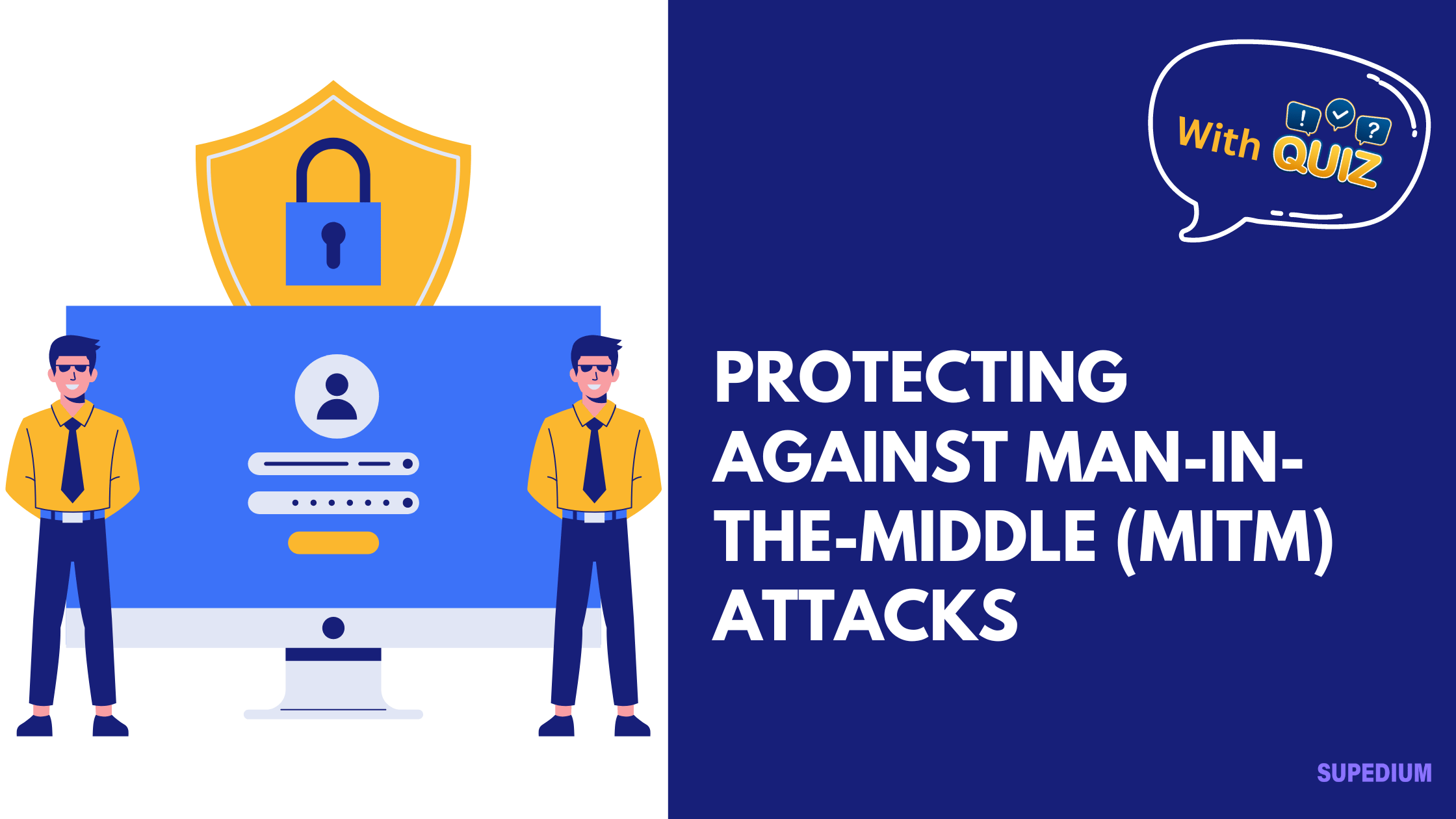Table of Contents
![]()
I. Introduction
In today’s interconnected digital landscape, understanding and protecting against Man-in-the-Middle (MitM) attacks has become crucial. A MitM attack occurs when a malicious actor secretly intercepts and relays communication between two parties who believe they are directly communicating with each other. This type of attack can lead to severe consequences, including data theft, financial loss, and compromised privacy.
A. Definition of Man-in-the-Middle (MitM) Attacks
A MitM attack typically involves a third party inserting themselves into a conversation or data transmission. This can occur in various scenarios, such as unsecured Wi-Fi networks, compromised routers, or through phishing tactics. Understanding the mechanisms behind these attacks is vital for both individuals and organizations to safeguard their information.
B. Importance of Understanding MitM Attacks
As cyber threats continue to evolve, MitM attacks are becoming increasingly prevalent. Recognizing the potential risks and learning how to mitigate them can significantly reduce the likelihood of falling victim to these attacks.
II. Types of MitM Attacks
A. Eavesdropping
Eavesdropping is one of the most common forms of MitM attacks. It involves intercepting and monitoring data transmissions without the consent of the parties involved. Attackers typically use tools like packet sniffers to capture unencrypted data, which can include sensitive information such as passwords and personal messages.
B. Session Hijacking
In session hijacking, an attacker steals a user’s session token, allowing them to gain unauthorized access to the user’s online accounts. This can happen through various means, such as cross-site scripting (XSS) or through insecure HTTP connections.
C. SSL Stripping
SSL stripping exploits the vulnerabilities of secure communications. An attacker downgrades a user’s connection from HTTPS (secure) to HTTP (insecure) without their knowledge, making it easier to intercept data. This attack can lead to exposure of sensitive information like credit card numbers and personal details.
D. DNS Spoofing
DNS spoofing involves manipulating the Domain Name System to redirect users to malicious websites. Attackers can trick users into believing they are visiting a legitimate site, leading to data theft or malware installation.
E. Wi-Fi Eavesdropping
Wi-Fi eavesdropping poses a significant risk, especially in public or unsecured networks. Attackers can set up rogue hotspots or use packet sniffing tools to capture data transmitted over these networks, exposing users to various vulnerabilities.
III. Recognizing Signs of MitM Attacks
A. Suspicious Network Behavior
Users should be vigilant for unusual network behavior, such as unexpected redirects, error messages, or significant slowdowns in performance. These signs can indicate that an attacker is intercepting communications.
B. Certificate Warnings
Secure communications rely on SSL/TLS certificates. Users should pay attention to certificate warnings in their browsers, as they can indicate potential MitM attacks. Legitimate certificate warnings should never be ignored.
C. Unexplained Account Activity
Monitoring for unusual account activity is crucial. Unauthorized login attempts, unfamiliar transactions, or sudden changes in account settings can all signal a successful MitM attack.
IV. Best Practices for Protection
A. Use of Strong Encryption
Implementing strong encryption methods is one of the most effective defenses against MitM attacks. Utilizing SSL/TLS for web communications ensures that data is encrypted and less susceptible to interception. Additionally, using Virtual Private Networks (VPNs) can provide an extra layer of security for online activities.
B. Strong Authentication Mechanisms
Multi-factor authentication (MFA) adds an essential layer of security by requiring users to provide multiple forms of verification before accessing accounts. Strong password policies, including regular updates and the use of password managers, can further protect sensitive information.
C. Secure Configuration of Networks
Securing Wi-Fi networks is critical in preventing MitM attacks. Using WPA3 encryption and disabling guest access can help safeguard against unauthorized connections. Users should avoid conducting sensitive transactions over public Wi-Fi unless absolutely necessary.
D. Regular Software Updates
Keeping software and security tools up to date is vital for protecting against vulnerabilities. Regular patch management ensures that systems are fortified against the latest threats and exploits.
V. Organizational Strategies
A. Employee Training and Awareness
For organizations, employee training on recognizing phishing attempts and MitM attacks is essential. Comprehensive security awareness programs can significantly reduce the risk of human error leading to breaches.
B. Incident Response Planning
Developing an incident response plan prepares organizations to respond quickly and effectively to suspected MitM attacks. Regular drills and assessments can help ensure readiness.
C. Network Segmentation
Network segmentation limits access to sensitive information and systems. By implementing firewalls and intrusion detection systems, organizations can create layers of protection against potential attacks.
VI. Tools and Technologies
A. VPN Services
Using a reliable VPN service encrypts internet traffic, making it difficult for attackers to intercept data. When choosing a VPN, it’s crucial to select reputable providers known for robust security practices.
B. Antivirus and Anti-malware Solutions
Antivirus and anti-malware software provide real-time protection against a variety of cyber threats. Regularly updating these tools ensures continued effectiveness against new and evolving risks.
C. Network Monitoring Tools
Employing network monitoring tools allows for the detection of unusual traffic patterns and potential breaches. These tools help in identifying and responding to suspicious activities promptly.
VII. Legal and Ethical Considerations
A. Understanding Privacy Laws
Familiarity with privacy regulations, such as the General Data Protection Regulation (GDPR) and the California Consumer Privacy Act (CCPA), is vital for organizations. Compliance not only protects user data but also avoids legal repercussions.
B. Ethical Hacking
Engaging ethical hackers for penetration testing can help identify vulnerabilities before they can be exploited by malicious actors. This proactive approach strengthens defenses and enhances overall cybersecurity posture.
VIII. Conclusion
In an era where cyber threats are ever-present, protecting against Man-in-the-Middle (MitM) attacks is a shared responsibility among individuals and organizations alike. By understanding the types of MitM attacks, recognizing the signs of an intrusion, and implementing best practices for protection, users can significantly reduce their risk. Continuous vigilance, education, and adaptation to the evolving landscape of cybersecurity are essential to maintaining safety in our digital interactions.






Be the first to comment